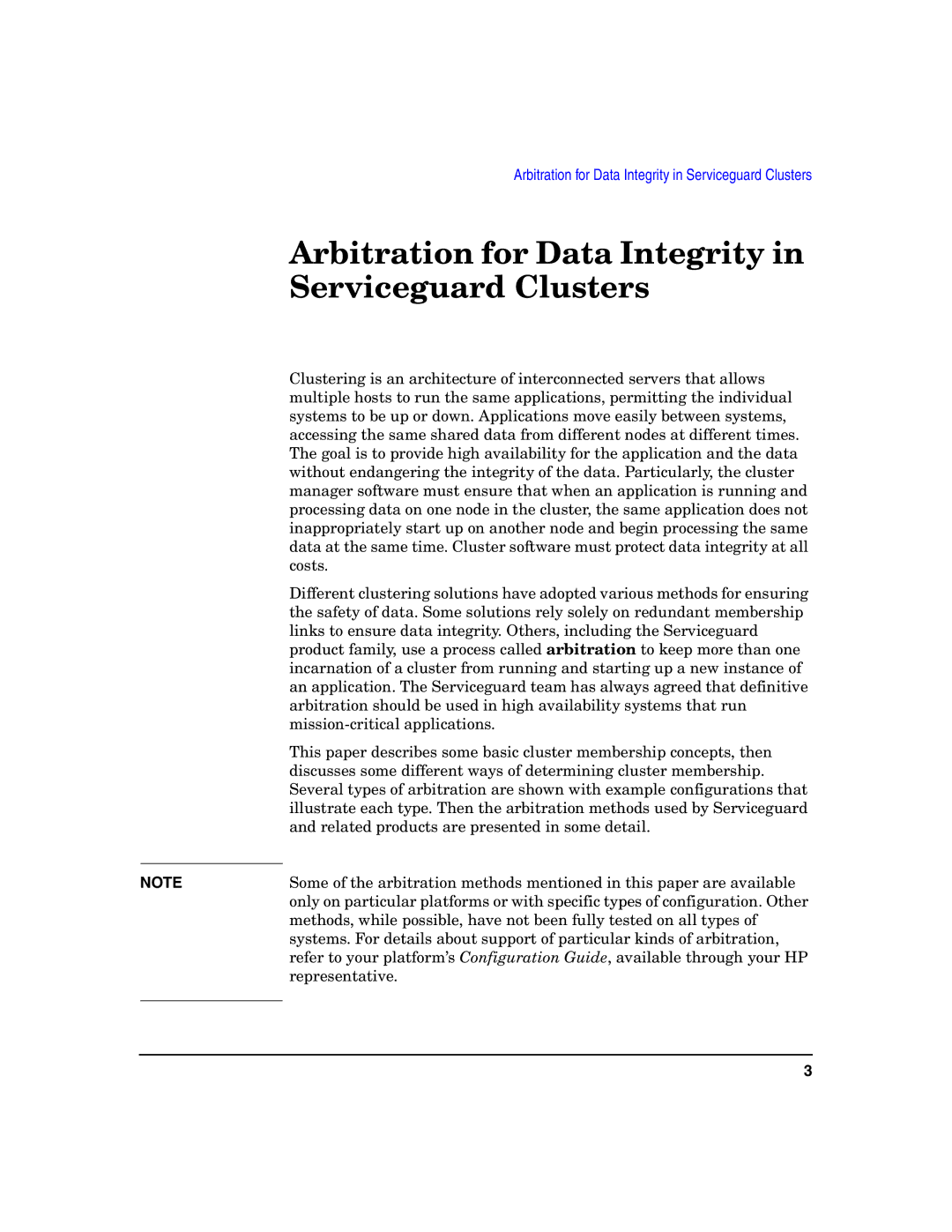Arbitration for Data Integrity in Serviceguard Clusters
Arbitration for Data Integrity in Serviceguard Clusters
| Clustering is an architecture of interconnected servers that allows |
| multiple hosts to run the same applications, permitting the individual |
| systems to be up or down. Applications move easily between systems, |
| accessing the same shared data from different nodes at different times. |
| The goal is to provide high availability for the application and the data |
| without endangering the integrity of the data. Particularly, the cluster |
| manager software must ensure that when an application is running and |
| processing data on one node in the cluster, the same application does not |
| inappropriately start up on another node and begin processing the same |
| data at the same time. Cluster software must protect data integrity at all |
| costs. |
| Different clustering solutions have adopted various methods for ensuring |
| the safety of data. Some solutions rely solely on redundant membership |
| links to ensure data integrity. Others, including the Serviceguard |
| product family, use a process called arbitration to keep more than one |
| incarnation of a cluster from running and starting up a new instance of |
| an application. The Serviceguard team has always agreed that definitive |
| arbitration should be used in high availability systems that run |
| |
| This paper describes some basic cluster membership concepts, then |
| discusses some different ways of determining cluster membership. |
| Several types of arbitration are shown with example configurations that |
| illustrate each type. Then the arbitration methods used by Serviceguard |
| and related products are presented in some detail. |
|
|
NOTE | Some of the arbitration methods mentioned in this paper are available |
| only on particular platforms or with specific types of configuration. Other |
| methods, while possible, have not been fully tested on all types of |
| systems. For details about support of particular kinds of arbitration, |
| refer to your platform’s Configuration Guide, available through your HP |
| representative. |
|
|
3
